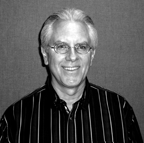 | Howard McDaniel is president and owner of Even-Temp of Wichita, Inc... Howard started Even-Temp of Wichita, Inc. in 1991. Even-Temp is a fully-licensed and bonded residential and commercial mechanical contractor in Wichita and the surrounding areas. Howard has been a member of the Kansas Cooling Contractors Association (aka K.C.C.A.) since 2001. He is also a member of the B.B.B. and Chamber of Commerce. Howard’s education includes graduate of Pittsburg vocational technical college and 5 years of schooling through the Local 171 Plumbing apprenticeship school. Howard built Even-Temp to what it is today. He started his business working many hours, night and day, by himself to a successful business with over 20 employees. Howard is an honest, fair and considerate business man, which is proven by the number of customers he has and by the number of them that have been with him for over 10 years. Howard can be contacted at his office at (316) 262-2277, fax at (316) 262-5366, or you can e-mail him at Howard@eventemp.com. |
Home Improvement
2007-08-01 11:27:00
Handling an ozone generator
If I follow manufacturers’ directions of an ozone generator, can I be harmed?
Results of some controlled studies show concentrations of ozone considerably higher than these standards are possible even when a user follows the manufacturer’s operating instructions.
There are many brands and models of ozone generators on the market. They vary in the amount of ozone they can produce. In many circumstances, the use of an ozone generator may not result in ozone concentrations that exceed public health standards. But many factors affect the indoor concentration of ozone so that under some conditions ozone concentrations may exceed public health standards.
In one study (Shaughnessy and Oatman, 1991), a large ozone generator recommended by the manufacturer for spaces “up to 3,000 square feet,” was placed in a 350 square foot room and run at a high setting. The ozone in the room quickly reached concentrations that were exceptionally high--0.50 to 0.80 ppm which is 5-10 times higher than public health limits (see Table 1).
In an EPA study, several different devices were placed in a home environment, in various rooms, with doors alternately opened and closed, and with the central ventilation system fan alternately turned on and off. The results showed that some ozone generators, when run at a high setting with interior doors closed, would frequently produce concentrations of 0.20 - 0.30 ppm. A powerful unit set on high with the interior doors opened achieved values of 0.12 to 0.20 ppm in adjacent rooms. When units were not run on high, and interior doors were open, concentrations generally did not exceed public health standards (US EPA, 1995). The concentrations reported above were adjusted to exclude that portion of the ozone concentration brought in from the outdoors. Indoor concentrations of ozone brought in from outside are typically 0.01- 0.02 ppm, but could be as high as 0.03 - 0.05 ppm (Hayes, 1991; U.S. EPA, 1996b; Weschler et al., 1989, 1996; Zhang and Lioy; 1994). If the outdoor portion of ozone were included in the indoor concentrations reported above, the concentrations inside would have been correspondingly higher, increasing the risk of excessive ozone exposure. None of the studies reported above involved the simultaneous use of more than one device. The simultaneous use of multiple devices increases the total ozone output and therefore greatly increases the risk of excessive ozone exposure.


